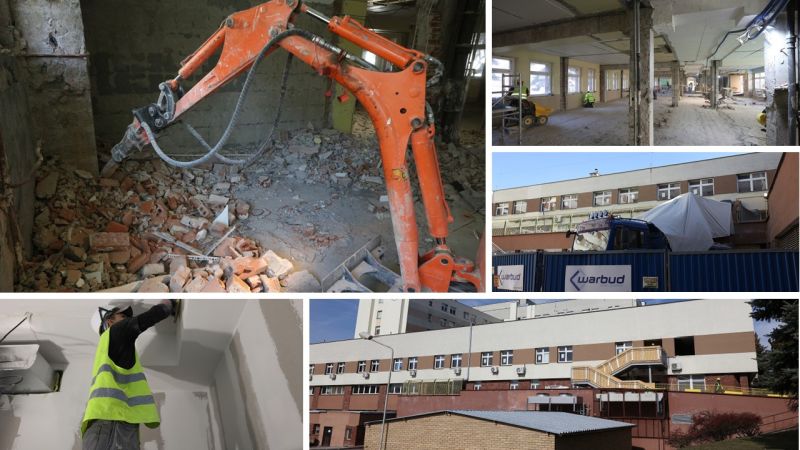WARBUD News
Media Information
Working in an active hospital is not the easiest thing to do, especially with a full scope of construction works. WARBUD’s task is a comprehensive and major rebuilding of the University Children's Hospital facility in Lublin, along with its adaptation to the new functional layout. Another part of the project is the addition of the fifth floor to segments A3 and A4, a thorough replacement of all internal services and the adaptation of the entire facility to fire regulations. All that shows how much work the construction team has to do. We have asked Karol Nalepa, Site Manager at WARBUD SA, about the progress of the works today.
‘In fact, we have a wide scope of work here, from demolition to finishing elements. We have just completed renovation of six floors of the building. These are treatment units with an overall area of 9,423 m². In the so-called low part of the hospital, we have renovated the Polyclinic, the Cytogenetic and IT Laboratories as well as the Economic Analysis Department, the Dialysis Station of the Nephrology Department and the Monitoring Centre with a total area of nearly 1,400 m²,’ reports the Site Manager. ‘A large portion of the civil and installation works, i.e. the installation of water and sewage risers, medical gases system, fire protection, ventilation and new electrical shafts, had to be done at night, so as not to interfere with the daily work of the medical staff.
Now we are at the stage of renovation of the Intensive Care Unit, the Paediatric Haematology and Oncology Clinic with the Day Care Unit, the C3 Polyclinic Centre and the hospital pharmacy. Now there are 90 people working on the construction site and in the culminating moments of our work their number reaches 150. What is ahead of us is the adaptation of the facility to the current fire protection requirements including approximately 20,000 m² of space in the low part of the building. What is the biggest challenge at this stage? First of all, I would mention organizational issues. We adapt the facility to current standards section by section. Some hospital employees move to completed spaces so that we can work in the rooms they previously occupied, while in other hospital units where they cannot change locations, we carry out work during the "second shift" when there are no staff in them. It's not very comfortable for both parties but can handle it. We have a common goal,’ adds Karol Nalepa.





